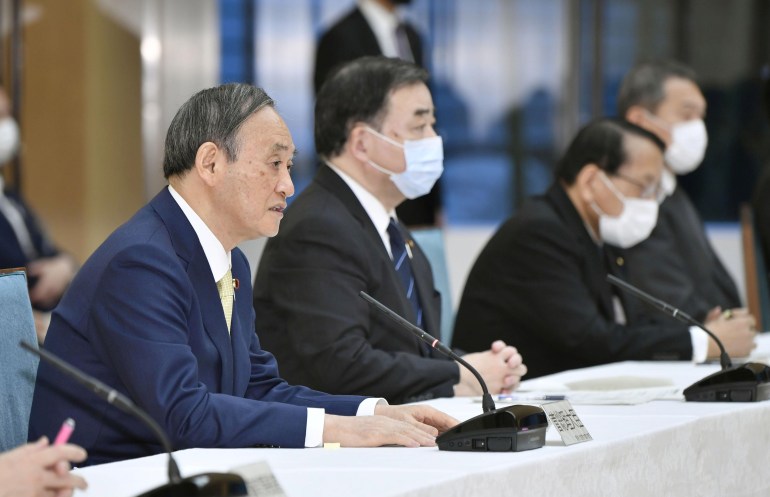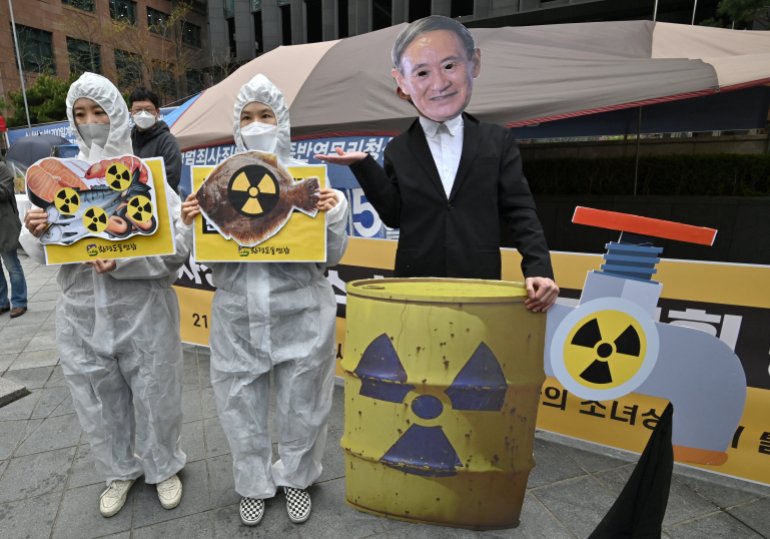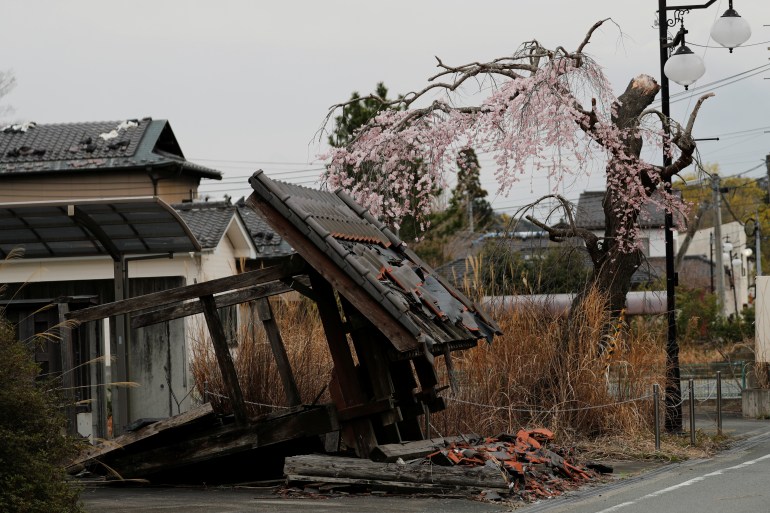Explainer: The toxic water at Japan’s Fukushima nuclear plant
Japan will release about 1.25 million tonnes of Fukushima water into the sea – part of its plan to decommission the power station destroyed in the 2011 tsunami.

Japan’s decision to release more than one million tonnes of treated radioactive water – equivalent to about 500 Olympic-sized swimming pools – from the tsunami-ravaged Fukushima nuclear plant into the sea has stirred fierce controversy. The announcement was made on Tuesday.
The first water release is not expected for about two years, during which time the plant’s owner, Tokyo Electric Power (TEPCO) will filter the water, build infrastructure and secure regulatory approval.
Keep reading
list of 4 itemsThe Fukushima disaster in maps and charts
‘We don’t know when it will end’: 10 years after Fukushima
What is the legacy of Japan’s Fukushima disaster?
Here are some questions and answers about the plan, which is expected to take decades to complete.
What is the processed water?
The radioactive water has built up at the plant since the 2011 tsunami destroyed electricity and cooling systems at the power station, triggering the worst nuclear accident since Chernobyl.
Some was used to cool the three damaged reactors, while the rest is from rain that has fallen onto the contaminated site, and groundwater.
An extensive pumping and filtration system known as ALPS (Advanced Liquid Processing System) ensures the melted uranium fuel rods remain cool and extracts tonnes of newly contaminated water every day, filtering out most of the radioactive elements.

Plant operator Tokyo Electric Power (TEPCO) has built more than 1,000 tanks to hold some 1.25 million tonnes of processed water at the site but they will be full by the second half of 2022.
In 2018, the company admitted it had not filtered all dangerous materials out of the water, despite saying for years they had been removed.
What radioactive isotopes are in the water?
The ALPS process removes most of the radioactive isotopes to ensure the wastewater meets international safety guidelines.
But it cannot remove some, including tritium, a radioactive isotope of hydrogen.
Tritium is considered to be relatively harmless because it does not emit enough energy to penetrate human skin. But when ingested it can raise cancer risks, a Scientific American magazine article said in 2014.
The half-life of tritium – the time needed for one half the atoms of a radioactive isotope to decay – is 12.3 years. In humans, it has an estimated biological half-life of 7-10 days.
How will the water be released?
The government says the release process will meet international standards, and has been endorsed by the International Atomic Energy Agency (IAEA).
Water containing tritium is routinely released from nuclear plants around the world and releasing the Fukushima water to the ocean is supported by regulatory authorities.

“Releasing into the ocean is done elsewhere. It’s not something new. There is no scandal here,” IAEA Director General Rafael Mariano Grossi has said.
Government spokesman Katsunobu Kato says the dilution would reduce tritium levels to well below standards set domestically and by the World Health Organization (WHO) for drinking water, and will take place under IAEA supervision.
Why is the plan controversial?
Many people have questioned TEPCO’s plans because there is a high level of distrust of the company following years of leaks, spills, malfunctioning equipment and safety breaches.
Environmental groups such as Greenpeace, which opposes nuclear power, say radioactive materials like carbon-14 that remain in the water can “be easily concentrated in the food chain”.
They allege accumulated doses over time could damage DNA and want to see the water stored until the technology is developed to improve filtration, accusing TEPCO of taking the “cheaper option”.
Local fishing communities worry that years of work to convince consumers that Fukushima’s seafood is safe will be wiped out by the release.
“The message from the government that the water is safe is not reaching the public, that’s the huge problem,” an official with the association of Fukushima fishermen unions told the AFP news agency.

He said trading partners had warned they would stop selling their products and consumers had said they would stop eating Fukushima seafood if the water is released.
“Our efforts in the past decade to restore the fish industry will be for nothing.”
China has also expressed concern about the plan, calling it “highly irresponsible”.
South Korea continues to impose restrictions on Japanese produce following the Fukushima disaster and a foreign ministry spokesman said the country had “serious concerns” about the decision to go ahead with the water release, which it said “could bring a direct and indirect impact on the safety of our people and surrounding environment”.
Municipal councils in Busan and Ulsan, South Korean cities close to the sea, have called for the release plan to be scrapped.
What about Fukushima seafood?
The government says radioactive elements in the water are far below international standards, pointing out that wastewater is regularly discharged from nuclear plants elsewhere.
Even releasing all the stored water in a single year would produce “no more than one-thousandth [of] the exposure impact of natural radiation in Japan,” the foreign ministry said in a reply to a UN report.
For food, Japan nationally sets a standard of no more than 100 becquerels of radioactivity per kilogramme (Bq/kg), compared with 1,250 Bq/kg in the European Union and 1,200 in the US.
But for Fukushima produce, in a bid to win consumer trust, the level is even lower, at just 50 Bq/kg. Hundreds of thousands of food items have been tested in the region since 2011.
What do scientists say?
Michiaki Kai, an expert on radiation risk assessment at Japan’s Oita University of Nursing and Health Sciences, said it was important to control the dilution and volume of released water.
But “there is consensus among scientists that the impact on health is minuscule”, he told AFP.
Still, “it can’t be said the risk is zero, which is what causes controversy”.
Geraldine Thomas, chair of molecular pathology at Imperial College and an expert on radiation said tritium “does not pose a health risk at all – and particularly so when you factor in the dilution factor of the Pacific Ocean”.
She said carbon-14 was also not a health risk, arguing chemical contaminants in seawater such as mercury should concern consumers more “than anything that comes from the Fukushima site”.
“I would have no hesitation whatsoever” eating Fukushima seafood, she added.